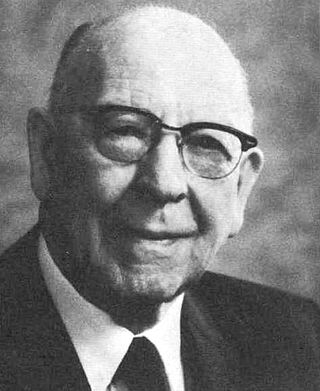
Mormons are a religious and cultural group related to Mormonism, the principal branch of the Latter Day Saint movement started by Joseph Smith in upstate New York during the 1820s. After Smith's death in 1844, the movement split into several groups following different leaders; the majority followed Brigham Young, while smaller groups followed Joseph Smith III, Sidney Rigdon, and James Strang. Most of these smaller groups eventually merged into the Community of Christ, and the term Mormon typically refers to members of the Church of Jesus Christ of Latter-day Saints, as today, this branch is far larger than all the others combined. People who identify as Mormons may also be independently religious, secular, and non-practicing or belong to other denominations. Since 2018, the LDS Church has emphasized a desire for its members be referred to as "members of The Church of Jesus Christ of Latter-day Saints", or more simply as "Latter-day Saints".

Mormonism is the religious tradition and theology of the Latter Day Saint movement of Restorationist Christianity started by Joseph Smith in Western New York in the 1820s and 1830s. As a label, Mormonism has been applied to various aspects of the Latter Day Saint movement, although there has been a recent push from the Church of Jesus Christ of Latter-day Saints to distance themselves from this label. A historian, Sydney E. Ahlstrom, wrote in 1982, "One cannot even be sure, whether [Mormonism] is a sect, a mystery cult, a new religion, a church, a people, a nation, or an American subculture; indeed, at different times and places it is all of these."

Polygamy was practiced by leaders of the Church of Jesus Christ of Latter-day Saints for more than half of the 19th century, and practiced publicly from 1852 to 1890 by between 20 and 30 percent of Latter-day Saint families.
The status of women in Mormonism has been a source of public debate since before the death of Joseph Smith in 1844. Various denominations within the Latter Day Saint movement have taken different paths on the subject of women and their role in the church and in society. Views range from the full equal status and ordination of women to the priesthood, as practiced by the Community of Christ, to a patriarchal system practiced by the Church of Jesus Christ of Latter-day Saints, to the ultra-patriarchal plural marriage system practiced by the Fundamentalist Church of Jesus Christ of Latter-Day Saints and other Mormon fundamentalist groups.

The Brigham Young University Jerusalem Center for Near Eastern Studies, situated on Mount of Olives in East Jerusalem, is a satellite campus of Brigham Young University (BYU), the largest religious university in the United States. Owned by the Church of Jesus Christ of Latter-day Saints, the center provides a curriculum that focuses on Old and New Testament, ancient and modern Near Eastern studies, and language. Classroom study is built around field trips that cover the Holy Land, and the program is open to qualifying full-time undergraduate students at either BYU, BYU-Idaho, or BYU-Hawaii.

LeGrand Richards was a prominent missionary and leader in the Church of Jesus Christ of Latter-day Saints. He served as the seventh presiding bishop of the LDS Church from 1938 to 1952, and was then called as a member of the Quorum of the Twelve Apostles by church president David O. McKay. Richards served in the Quorum of the Twelve until his death in Salt Lake City, Utah, at the age of 96.

Orson Hyde was a leader in the early Latter Day Saint movement and a member of the first Quorum of the Twelve Apostles. He was the President of the Quorum of the Twelve Apostles of the Church of Jesus Christ of Latter-day Saints from 1847 to 1875 and was a missionary of the LDS Church in the United States, Europe, and the Ottoman Empire.

Polygamy in the Church of Jesus Christ of Latter Day Saints, or plural marriage, is generally believed to have originated with the founder of Mormonism, Joseph Smith. According to several of his associates, Smith taught that polygamy was a divine commandment and practiced it personally, by some accounts marrying more than 30 women, some of whom had existing marriages to other men. Evidence for Smith's polygamy is provided by the church's "sealing" records, affidavits, letters, journals, and diaries. However, until his death, Smith and the leading church quorums denied that he preached or practiced polygamy. Smith's son Joseph Smith III, his widow Emma Smith, and the Reorganized Church of Jesus Christ of Latter Day Saints challenged the evidence and taught that Joseph Smith had opposed polygamy. They instead claimed that Brigham Young, the head of the Church of Jesus Christ of Latter-day Saints, introduced plural marriage after Smith's death. In 1852, leaders of the Utah-based LDS Church publicly announced the doctrine of polygamy.
This is a timeline of major events in Mormonism in the 20th century.
In the Latter Day Saint movement, a hosanna shout is an organized ritual of a congregation shouting "hosanna". It was first performed as a ritual in the dedication of the Kirtland Temple, and was a part of the Kirtland endowment ceremony. It continues to be practiced by some Latter Day Saint denominations, most notably the Church of Jesus Christ of Latter-day Saints, which practices the ritual at the dedication of each of its temples and other important buildings.

The Latter-day Saints’ Millennial Star was the longest continuously published periodical of the Church of Jesus Christ of Latter-day Saints, and was printed in England from 1840 until 1970, when it was replaced by the church-wide Ensign. It was primarily aimed at British Latter-day Saints.
The Church of Jesus Christ of Latter-day Saints teaches that Adam and Eve were the first man and the first woman to live on the earth and that their fall was an essential step in the plan of salvation. Adam in particular is a central figure in Mormon cosmology. Robert L. Millet, a Latter-day Saint author, wrote of the church's perspective:
Few persons in all eternity have been more directly involved in the plan of salvation—the creation, the fall, and the ultimate redemption of the children of God—than the man Adam. His ministry among the sons and daughters of earth stretches from the distant past of premortality to the distant future of resurrection, judgment, and beyond.

Anna Maria Ballantyne "Annie" Taylor Hyde was the founder and first president of the Daughters of Utah Pioneers and was a women's leader in the Church of Jesus Christ of Latter-day Saints.
The Church of Jesus Christ of Latter-day Saints has been subject to criticism and sometimes discrimination since its inception.
David Brian Galbraith is a retired Brigham Young University (BYU) professor of political science who served as director of the BYU Jerusalem Center.

The Church of Jesus Christ of Latter-day Saints in England refers to the Church of Jesus Christ of Latter-day Saints and its members in England. England has five missions, and both temples in the United Kingdom. With 145,385 members in 2011, England had more LDS Church members than any other country in Europe.
In the Church of Jesus Christ of Latter-day Saints, marriage between a man and a woman is considered to be "ordained of God". Marriage is thought to consist of a covenant between the man, the woman, and God. The church teaches that in addition to civil marriage, which ends at death, a man and woman can enter into a celestial marriage, performed in a temple by priesthood authority, whereby the marriage and parent–child relationships resulting from the marriage will last forever in the afterlife.
Mormon feminism is a feminist religious social movement concerned with the role of women within Mormonism. Mormon feminists commonly advocate for a more significant recognition of Heavenly Mother, the ordination of women, gender equality, and social justice grounded in Mormon theology and history. Mormon feminism advocates for more representation and presence of women as well as more leadership roles for women within the hierarchical structure of the church. It also promotes fostering healthy cultural attitudes concerning women and girls.
Apostolic succession in the Church of Jesus Christ of Latter-day Saints is the process of transition to a new church president when the preceding one has died.








